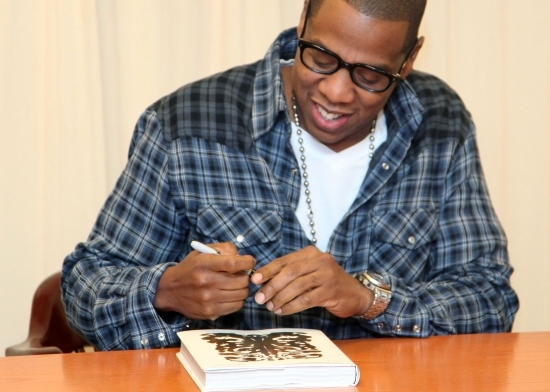
So you want to write? Either fortunately or unfortunately, there’s no single correct way to write. One author’s golden rule might be at the top of another author’s list of things not to do in writing. If you look one way, you may see only authors following the accepted norms for language and grammar, while you might look another way and find authors breaking down the rules of language entirely. And neither side is wrong. There’s no easy starting point, and it will take a lot of time and effort to work out the way that you find most comfortable and most suited to your abilities as a writer. So, the first thing you’ll want is determination.
Read
With that determination you can set out to study and do exercises. Just reading good books can do wonders for you, as it will expose you to a wide variety of skillful writing. On the flip-side, you can also carefully read not-so-great books and try to pinpoint their shortcomings. Don’t just read books you’re familiar with or that are in your preferred genre. Early in the game, you’re looking to expand your toolbox, so check out authors from different time periods, genres, writing movements, and formats (novel, novella, short story, super short, etc.).
Anthologies can be a great way to quickly encounter a lot of different styles of writing from various authors and time periods. There are also lots of great guides to writing that will go far more in depth than we can go here. Jerome Stern’s Making Shapely Fiction is a good start and quick to get through.
Do exercises
Exercises are a great way to stretch yourself. They invite you to try new things with your writing but don’t require you to commit as much as if you’d spent a month planning out a story you wanted to write or decided on a whim to get experimental right in the middle of writing a novel. You might just take a notebook and write out random beginnings to stories, just to get practice opening a story in an interesting way that can hook readers (a very important skill). You might also try to write several story beginnings as awful as you possibly can, just to get your mind thinking about what makes something bad and may turn off readers.
Head outside with your notebook, get out in the world, and try describing things, people, or settings. You might first describe them as matter-of-factly as you can. Then try writing a highly subjective interpretation of what’s there, and go further, describing something without using any adjectives. The possibilities for this kind of exercise are endless and each stretches you a little way toward becoming a more flexible writer. (See end links for more exercises.)
A few other nice exercises are character sketches and prompt writing. Prompt writing is good to just get your creative juices flowing. Generally, writing on a prompt is short, as you’re not trying to write the next great novel based on some random prompt. The prompt itself could be a scenario to start from, like “Write about a man who’s just been kicked in the face,” or could just be a single word, like “bungalow.” What you do and where you go with those prompts is entirely up to you. Just try to have fun with it.
Create sketches of who your characters are. They get you thinking about what details you should include to paint your character, to round them out. They help you discover subtleties in how your characters behave that show readers deeper aspects without you having to overtly write things like “When John was a child, his brother had pushed him into a fire, and his resulting trauma has made him terribly apprehensive around open flames.” It’s good practice for just writing about characters, and it can also be helpful when trying to get used to a character you’ve created but don’t yet know thoroughly. Which brings us to the next (terribly important) thing.
Know your characters
John is a cool guy, down on his luck, his girlfriend just left him, and he’s in debt. Nope, that’s probably still not enough. When you’re writing a story, it’s essential that you know who your characters are. Not just by name, not by their career or appearance. Human’s have entire lives behind them, they have behavioral ticks, past traumas, clear and hidden agendas, fears, irrational things to be shy about, gestures they don’t realize they make, sentiments about the first snowfall of the year, opinions about whether Han or Greedo shot first in Star Wars IV: A New Hope, and definitely particular ways of talking to different people in their lives. And so do your characters.
The more important a character is, the more you ought to know about them. You don’t have to write every detail about them into the story, but you could consider how those details may influence their actions in the story. You also shouldn’t forget about smaller characters. If they appear regularly in your story, you should have a good think about who they are – that absolutely means your antagonists, too. A store clerk who your main character buys a soda from in a single sentence might not require as much thought, but hey, she could be having a bad day and short your main character 25 cents in change that he then can’t put into the parking meter, thus resulting in his car getting towed and setting him off on the spiral of events that become his whole story. It’s up to you. The folks over at NaNoWriMo put together a handy list of details you should know about your characters and keep it handy whenever you’re coming up with new characters.
Give your characters motivation
This is really a similar point to the last one, but it’s a bit more forward-thinking and will likely have more to do with the plot. Everyone has a reason for doing what they do, even if that reason is that they have no idea what else to do with themselves. Your protagonist ought to have something driving him or her. Your antagonist, assuming you have one, ought to have something driving him or her as well (and not just that “they’re evil”). Your characters’ ultimate motivation might not be directly related to objectives they have in the plot, but they do matter, and they give readers more reason to root for your character.
If your protagonist is just trying to pick up his sick and ailing mother from the hospital but it somehow reflects on his motivation to save his shambles of a marriage, then the simple act of getting to the hospital to give his mother a lift is given that much more weight, and we as readers can feel that motivation coming through from the protagonist.
A character that lacks some motivation can be hard to follow for readers, and might also make for a disjointed plot, which in turn makes the story even harder to follow. You don’t have to mention what their motivation is (it’s OK to make readers figure some things out for themselves), but you should know what it is, and be sure that your character keeps it at least in the back of his or her mind. Once your characters are set with motivations, we can go on to the next element.
Frustrate your characters
Often times we want to read stories about characters who overcome adversity and end happily ever after. But most people will probably end up scratching their heads and potentially even anger at reading a story about John who wakes up happy, spends his day happy, encounters no difficulties to make him unhappy, and goes to bed thinking about how much happier he is than everyone who just wasted their time reading his story.
One of the most important parts of a story is the conflict that the character must overcome. It doesn’t have to be a single conflict, nor a matter of life and death, and they don’t have to succeed. But giving them trouble is what makes a plot. It ensures something actually happens in the story. If our protagonist John has a gun pointed to his face, this problem ensures that he either does something to not get shot, or else our story might end quickly (unless this is a ghost story).
Plan out your story a bit
Kurt Vonnegut has some great and humorous advice on how to craft a story’s arc that’s definitely worth checking out when you’re starting to plan. NaNoWriMo also has a simple guide to plots. You don’t have to follow smooth story arcs – things can happen suddenly with dramatic impact and things can oscillate, but a story should probably avoid stagnation, with nothing about the characters or the world around them moving in any noticeable direction.
You’ll want to come up with a general idea for how your story is going to go. Work out some details of where and when it takes place, what happens at what points, who’s involved, what the outcomes are. Knowing all of this will help you figure out where the action is (not like action movie action, but just the interesting bits of the story that will engage your readers and move the story along). With a plan, you can decide where scenes should start and end, and where your whole story should start and end (it’ll also help you decide who will be telling the story, and when they’ll be telling it. It could be the main character telling it as it happens, it could be the antagonist recalling it late in life, or it could just be your typical omniscient narrator relaying the facts of a story in the past).
There’s no rule that says you have to start at any particular spot. Some writers make a habit of starting their work at the end, circling back to the beginning, and working toward the end again. You might start your piece right before some big catalytic event, like the day before your protagonist’s family is kidnapped, or right at the tail end of some catalytic event, like as your protagonist’s boss is saying, “And don’t come back,” after firing the protagonist.
The key is to decide if a scene adds value and has significance. If it doesn’t, you should probably consider omitting it and just working around it. Just omitting a scene doesn’t mean it doesn’t occur in the story, and you can use that to your advantage. Let’s take this example: You’ve planned to have a chapter where our good old protagonist John goes into work and gets fired, but you realize the actual scene of him getting fired doesn’t really have anything significant beyond the catalyst of him losing his job. So instead of writing a dry chapter that doesn’t have a lot of weight, you might end one chapter with John headed to work then start the next chapter with John walking out of work in shock, carrying a box full of everything off his desk.
One thing you don’t have to do is plan out every detail of your story. Doing so could make the act of actually writing it majorly un-fun. It can be an adventure to write, and as you do, you may see opportunities to try something other than what you had planned, and it could turn out loads better that way. It may even ruin all the plans you had made for the rest of the story, and if you’ve over-planned, you’re more likely to be resistant to these new ideas. As you write, you’ll also likely become even more familiar with your characters than you were when you were coming up with them, and you might realize that our protagonist John would never get fired without a little resistance or rebellion. Maybe that next chapter would actually have to start with him walking out of his work place as the fire alarm is blaring and the sprinkler system is creating chaos. Who knows? The story is yours, the characters are yours, and you don’t have to let your original plans dictate what you write. Which brings us to the next step.
This step is simple. Write. Write your story. Write other stories. Continue writing exercises. Stuck on one story? Work on another. Fiction ideas all dried up? Try writing a poem. Confused how to end one chapter? Try writing a later chapter to get an idea of what needs to happen to bridge the two. Just don’t let yourself stop writing. Don’t claim “writer’s block” and stagnate. Write. And then get ready for the next step.
Don’t be too attached to your baby
Sure, what you’ve just written might (and likely will) feel precious to you. But you’ve got to get ready to turn a critical eye back at it when you’re finished (and hopefully every now and then along the way you’ll stop and critically check over what you’ve written so far). If your story is a masterpiece in its first draft, bravo! If you’re like the rest of us, it’ll probably need some revisions, and you’ll have to decide what stays, what goes, what needs improving, and where you totally screwed up a mile in every direction (it happens).
Revision can be a painful process, as it may hurt to change the work you hold so dear. If you take your story to a workshop, it’s not always fun to receive criticism from others. But keep in mind that this is all with the aim of improving your story, making it better than it currently is, not ruining it.
Read through your work with a sharp eye. Pick out language that feels weak, passages that could be tightened up, sections that are dry or lacking in detail. Try to figure out if bits of your story could be said better, and more concisely. Overhaul the whole thing.
Wait a while, maybe a month or two.
And then do it again.
If you get really into the editing, you’ll have to avoid the temptation to over-edit and to never stop editing. However, like a baby bird, eventually there’s a time for sending your story out of the nest. If it doesn’t fly, then you can think again about more revisions, or whether the story’s as good as you feel it is (a critique group can help with that).

You can check out the latest casting calls and Entertainment News by clicking: Click Here
Click the logo below to go to the Home Page of the Website
Click the logo below to follow ETInside on Twitter
Click the logo below to follow ETInside on Facebook
Click the logo below to follow ETInside on Instagram
Click the logo below to follow ETInside on Pinterest
Click the logo below to follow ETInside on Medium
















